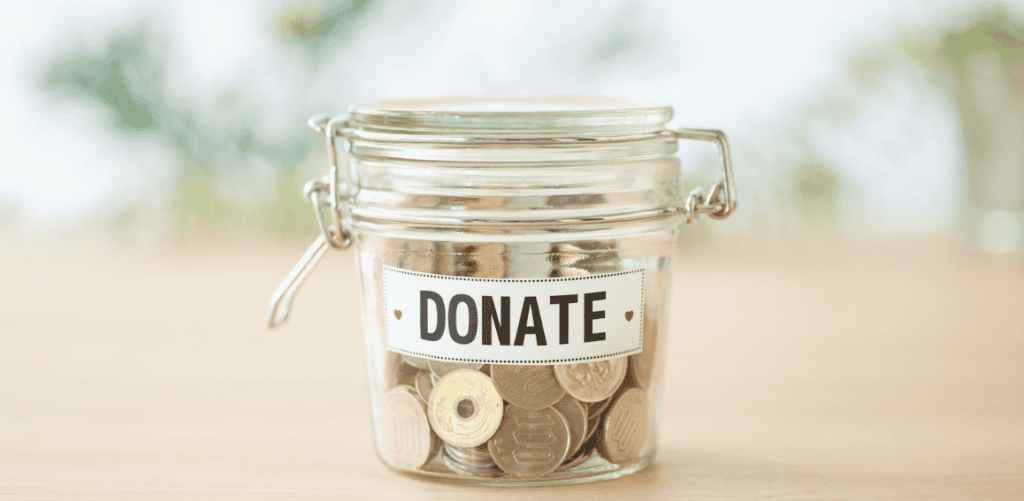
By alphacardprocess July 24, 2025
Picture a steady income of donations that automatically comes in each month — no last-minute fundraising drives, no endless solicitations for help, no panic when the calendar turns over. And that, in a nutshell, is the power of sustainers.
A record number of donors are choosing to “set it and forget it.” Whether for $5 or $50, a monthly donation is being embraced as a way for people who wish to support the causes they care about to do so without having to be reminded to give every time.
For nonprofits, this is more than simply convenient — it’s transformative. With recurring donations, it’s easier for an organization to plan out programs, manage cash flow and invest in long-term impact. They also show a preference for strong donor and organisation relationships that help turn one-off donors into repeat advocates.
In this post, we’re looking to answer the question of why recurring giving is so important today in this ever-evolving fundraising space, how to set up a flawless system for monthly donations, and, most importantly, how to really keep your recurring donors engaged.
What Are Recurring Donations?
Recurring donations are automatically processed, scheduled gifts that donors pledge to make at fixed intervals, most commonly monthly but in some cases weekly, quarterly or annually. The donor authorises a payment method (e.g., credit/debit card, bank transfer, digital wallet) and the system takes it from there.

Here’s how it works:
A donor registers once on your website or donation platform → your payment processor stores the data → donations are automatically transmitted to your nonprofit on the date(s) they selected. No reminders, re-entering details or requiring yet more approvals.
This model has gained popularity thanks to the rise of subscription-based culture — people are used to auto-paying for Netflix, Spotify, and gym memberships, so recurring giving feels natural. For donors, it’s convenient. For nonprofits, it means predictable income and stronger donor retention.
Why Recurring Donations Matter?
Recurring donations aren’t just convenient; they can supercharge nearly every facet of your nonprofit’s operations. Whether it’s financial planning or building donor relationships, here are the reasons monthly giving is so valuable:
Predictable, Stable Funding
Monthly donations generate a predictable source of income that you can rely on month in and month out.” This consistency helps you:
- Allocate your budget smarter and ahead of time.
- Depend less on seasonal fundraising pushes, or on off the cuff one-time pleas
- Invest in projects that should take a long time to generate a return, knowing that the money will be available for them.
Rather than being caught up in survival mode, your company can work on strategy and growth.

Higher Donor Lifetime Value
Donors who give monthly give more over all, yet their individual donations are smaller. A $20-a-month commitment becomes $240 in a year, which is often more than a donor would ever give in one shot.
The difference here is that returning donors are often more loyal, remaining engaged for an extended duration
You decrease dependence on constantly sourcing new donors which will ultimately stem your time and marketing expenditure
The outcome: greater lifetime value per supporter
Enhancing Donor Engagement and Commitment
Regular givers tend to feel more emotionally engaged with your cause. Their continued support makes them feel like they are part of something ongoing — not simply a one-time transaction.
- They view themselves as mission partners, not just donors
- Regular updates and clear communication will cause trust and emotional attachment to develop
- These connections become firmer with time, resulting in wider involvement.
Reduces Administrative Work
Recurring donations result in fewer reminders, less manual processing and less paperwork. The heavy lifting is all done automatically through your giving platform.
- Automation of these processes helps in avoiding errors and delays
- Staff can waste less time tracking payments and more time on high-impact work
In the end, it makes your internal processes more efficient.
Resilience During Tough Times
When one-time giving slows — during economic downturns, donor fatigue, or global crises — monthly donations provide a financial cushion.
- Repeat donors tend to be more engaged and less likely to pause their giving
- This stability can allow your organization to navigate uncertain decades without pausing crucial programs.
Key Components of a Successful Recurring Giving Program
A well-executed recurring donations program does more than simply collecting donations, — it builds loyalty, fosters trust, and keeps donors coming back month after month. Here’s what you need to get it right:

Easy Sign-Up Process
Keep the process of giving quick and easy for donors. A long or clunky form is one of the main obstacles to a recurring donation.
- Utilize mobile-friendly donation pages that have an easy-to-navigate design
- Minimize clicks and required fields
- Provide predetermined giving levels as well as the ability to enter your own amount
- Offer the ability to select how often donors want to give.
Flexible Payment Options
Today’s donors expect convenience and flexibility.
- Accept a wide range of payment methods: credit/debit cards, UPI, digital wallets, online payments, ACH, PayPal, etc.
- Make it easy for donors to pause, update, or cancel their recurring donations without frustration
- Ensure the system sends reminders before any changes or card expirations
Transparent Communication
Trust grows when donors know where their money is going.
- When our donors know where their money is going, they trust us.
- Make it clear how the monthly-donation money is spent
- Regularly share updates, stories or progress on impact trailers.
Send receipts and thank you messages automatically and personalize when you can.
Strong Branding & Messaging
Establish an identity and mission for your program.
- Name it (e.g., Hope Builders, The Giving Circle) to give it a sense of identity
- Center messaging around impact: “Your $20/month will provide a child with education
- Use donor-focused language that focuses on what they are enabling
Recognition & Retention
The longer you can keep someone in your recurring program, the more valuable they are — and the better they should feel.
- Acknowledge milestones such as anniversaries with thank-you emails or cards.
- Think about a members-only newsletter or community to continue to engage them.
When you add convenience to clarity and personalization, your recurring donations program isn’t just a transaction; it’s a meaningful, long-term partnership.

How to Set Up Recurring Donations?
Building a successful recurring donations system doesn’t require a tech team — just the right tools and a thoughtful setup. Follow these five steps to get your program up and running:
Step 1: Choose the Right Donation Platform
Start with a donation platform that makes recurring billing easy for both your organisation and your donors.
- Look for platforms like Donorbox, GiveWP, Stripe, PayPal, Razorpay, and others that support automated monthly donations
- Make sure the platform is secure (PCI-compliant) and offers seamless integration with your website
- Prioritize user experience — forms should load quickly and be mobile-friendly
Step 2: Design Your Recurring Giving Page
Create a dedicated landing page focused on monthly giving.
- Use a clean, mobile-optimized design with minimal distractions
- Include powerful visuals and short, emotionally engaging copy
- Highlight the impact of recurring donations: “Your $10/month provides school meals for 3 children”
- Add social proof — donor testimonials, total monthly givers, or a progress tracker
Step 3: Test the Experience
Before promoting it, test everything.
- Go through the process yourself or ask a colleague to do a test donation
- Watch for confusing steps, too many fields, or slow load times
- Ensure all confirmation messages, receipts, and follow-ups trigger correctly
Step 4: Promote It Across Channels
Get the word out everywhere your audience interacts with you.
- Feature it on your homepage, donation page, and as a pop-up or banner
- Include in email campaigns and newsletters
- Share on social media with clear calls-to-action
- Use QR codes on printed materials at events or community spaces
Step 5: Automate & Acknowledge
Make your donors feel valued from day one.
- Set up automated welcome emails, receipts, and monthly impact updates
- Use tools like Mailchimp or ConvertKit to schedule ongoing engagement
- Always remind donors they’re part of something meaningful and lasting
With the right setup and communication, recurring donations become a consistent, low-maintenance revenue stream that deepens supporter relationships.
Conclusion
Recurring donations are more than just a donation mechanism, they’re a means to form long-term, meaningful relationships with your donors. They provide predictable budgeting, minimize administrative burden and help you focus on your mission, rather than the next one-time gift.
For nonprofits, this isn’t just smart — it’s sustainable. Monthly donors tend to give more over time, stay on board longer and feel more connected to your cause. And the best part? You don’t need a ton of money, knowledge of technology or a big team to get it done. With the right technology partner and attention to delivering an excellent webpage, any organization can get a recurring donation program started on the path to success.
So here’s your next step: Look at your donation flow. Is it easy to use, mobile-friendly, inviting? Can someone set up a monthly donations in just a minute or two?
Frequently Asked Questions
1. Can donors choose how much and how often they give?
Yes! Most platforms allow donors to select their own amount and frequency — monthly, quarterly, or annually.
2. What happens if a donor’s card expires?
Most systems will prompt the donor to update their details. Some even send automatic reminders.
3. Are recurring donations tax-deductible?
Yes, as long as your organisation is eligible. Donors should receive receipts for each donation or an annual summary.
4. How do I keep recurring donors engaged long-term?
Send regular updates, share impact stories, celebrate milestones, and always thank them — even with a simple email.
5. What if a donor wants to cancel or pause their donations?
Good platforms make this easy. Providing flexibility increases trust and often keeps donors from cancelling altogether.